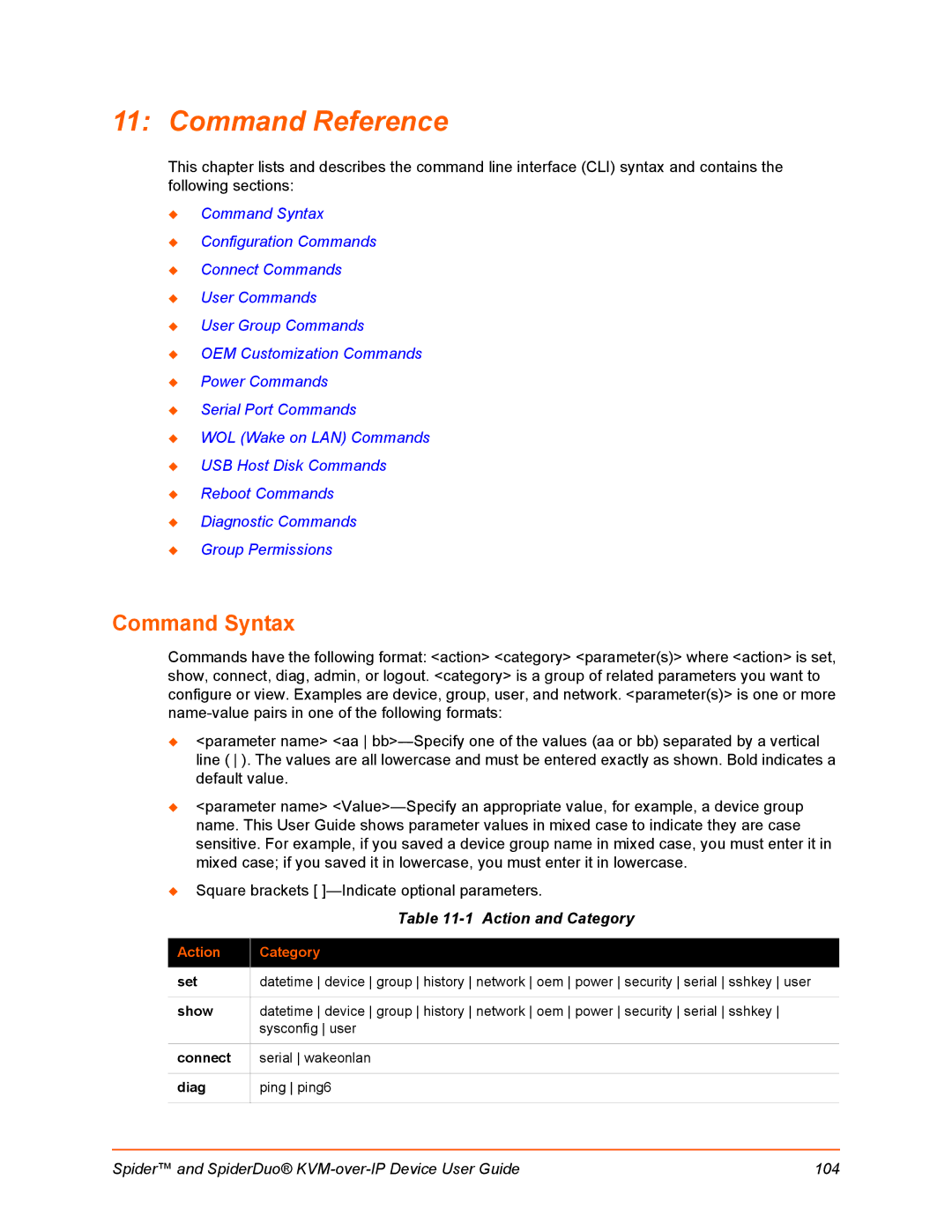11: Command Reference
This chapter lists and describes the command line interface (CLI) syntax and contains the following sections:
Command Syntax
Configuration Commands
Connect Commands
User Commands
User Group Commands
OEM Customization Commands
Power Commands
Serial Port Commands
WOL (Wake on LAN) Commands
USB Host Disk Commands
Reboot Commands
Diagnostic Commands
Group Permissions
Command Syntax
Commands have the following format: <action> <category> <parameter(s)> where <action> is set, show, connect, diag, admin, or logout. <category> is a group of related parameters you want to configure or view. Examples are device, group, user, and network. <parameter(s)> is one or more
<parameter name> <aa
<parameter name>
Square brackets [
| Table |
|
|
Action | Category |
|
|
set | datetime device group history network oem power security serial sshkey user |
|
|
show | datetime device group history network oem power security serial sshkey |
| sysconfig user |
|
|
connect | serial wakeonlan |
|
|
diag | ping ping6 |
|
|
Spider™ and SpiderDuo® | 104 |
